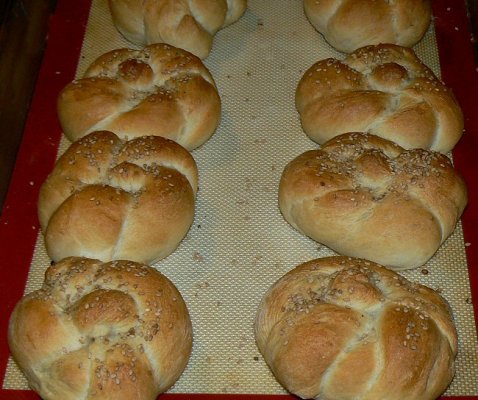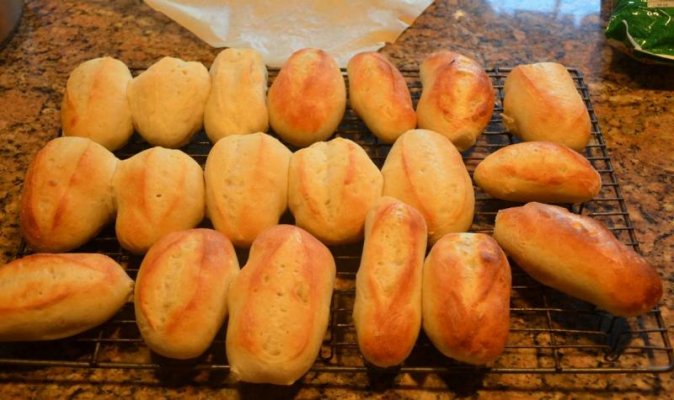Kaneohegirlinaz
Wannabe TV Chef
I was reading an article and came across this recipe:
https://www.kingarthurbaking.com/recipes/crusty-european-style-hard-rolls-recipe
My Husband has been talking about "Hard Rolls" for years and I have no clue as to what he's talking about. He's from the Philadelphia area, American-Italian and loves his bread, like a nice CheeseSteak on an Amoroso Roll.
Having spent the majority of my life in Hawaii, baked goods there are more towards the Asian palette as well the French-Influenced Vietnamese style of baking.
So I showed him this website and asked him to read the description at the top of the recipe and look at the photo ... is this it? Like a Kaiser Roll shape, but crusty on the outside and light and fluffy on the inside?
YES!!!

So, here's a question for the group:
a) have you ever made a roll like this or even this recipe?
b) could I stop after step #3, refrigerate; next day bring the dough to room temp, shape, one last rise and bake?
c) or maybe stop after the first rise for 3 hours, refrigerate; and continue
I count 11 hours in one go to even bake the dang things... at that point, it's time to go to bed!

I was kinda thinking of having fresh rolls for Hoagies that afternoon ...
Any and all comments, suggestions, thoughts, direction
would be surely appreciated.
PHEW! That was long winded
https://www.kingarthurbaking.com/recipes/crusty-european-style-hard-rolls-recipe
My Husband has been talking about "Hard Rolls" for years and I have no clue as to what he's talking about. He's from the Philadelphia area, American-Italian and loves his bread, like a nice CheeseSteak on an Amoroso Roll.
Having spent the majority of my life in Hawaii, baked goods there are more towards the Asian palette as well the French-Influenced Vietnamese style of baking.
So I showed him this website and asked him to read the description at the top of the recipe and look at the photo ... is this it? Like a Kaiser Roll shape, but crusty on the outside and light and fluffy on the inside?
YES!!!

So, here's a question for the group:
a) have you ever made a roll like this or even this recipe?
b) could I stop after step #3, refrigerate; next day bring the dough to room temp, shape, one last rise and bake?
c) or maybe stop after the first rise for 3 hours, refrigerate; and continue
I count 11 hours in one go to even bake the dang things... at that point, it's time to go to bed!
I was kinda thinking of having fresh rolls for Hoagies that afternoon ...
Any and all comments, suggestions, thoughts, direction
would be surely appreciated.
PHEW! That was long winded



